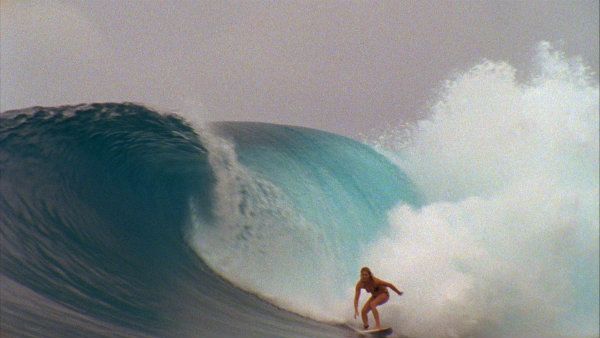What it's Like to Film the World's Best Female Surfer
Filmmaker Ava Warbrick talks to Marie Claire about capturing surf champion Stephanie Gilmore's most intimate moments—and her rise back to the top after a terrifying attack—in the documentary Stephanie in the Water, out this week on iTunes and Google Play. Read our August feature on Gilmore here.

Marie Claire: How did you learn about Stephanie Gilmore?
Through surfing. My father runs a surf company, Rip Curl [Gilmore's Australia-based sponsor for a decade]. I was visiting him in 2009, and he told me that I should probably meet Stephanie—that she's this amazing surfer who just won a couple of world titles, and she's really great on the guitar. I have a background in music and I used to play classic guitar, so he felt like we would get along.We started working on some short video pieces for the web, and developed a friendship and creative dialogue. We wanted to work on something larger. I was like "Wow, here's this young girl with so many concrete accomplishments at such a young age". Meeting someone so young who was the best in the world at what they did was fascinating.
MC: Your father founded one of the largest surfing companies in the world. Did you surf growing up?
I don't consider myself a surfer in the context of the professionals I spend a lot of time with, but I was pushed into the waves by my father. I grew up right across the street from the beach.
MC: How did you get into documentary filmmaking?
In school I was a painter, a sculptor, making all kinds of wild and weird installation art—but I was making a lot of videos, so I played around a lot with that medium. I always collect cameras and shoot on Super 8. I think my sensibility is definitely in the art realm, and that is very much in this project.

MC: When did you start shooting the Stephanie in the Water?
Get exclusive access to fashion and beauty trends, hot-off-the-press celebrity news, and more.
The first few times that I shot with Stephanie, we were really getting to know one another. The film really didn't really begin until 2010. Our first real shoot for that was in Puerto Rico, and at that point Stephanie and I had a pretty strong relationship, so we were able to shoot some intimate footage that I think is pretty unique. You see them in Hawaii in the opening scene, and I think that's where the film really lands and begins—after you get to see her win, see her grow up, learn about who she really is. I was really fascinated by the way Stephanie traveled, and the way she conducted herself on tour. To me it always seems so relaxed and grounded; I am a very anxious person, and everything came so natural for her. She would do interviews while driving— nothing seemed to faze her.
MC: When you started filming, you had no idea, of course, that Stephanie would be violently attacked near her apartment, and have to take time out from surfing.
Stephanie went home for the holiday period between Christmas and New Year's, and that's when that occurred. It shifted her confidence. I didn't hear about it from Stephanie. But then we shot the interview in New York City over two days when she was describing what had happened. It was a really grueling process for us. We hadn't seen each other for so long and we both had a lot to say and share and it was incredibly emotional. I had a feeling that Steph wanted to share that experience somehow. I had a lot of questions, but I didn't feel like I had a strong end game. I really just wanted to capture a moment, and as time unfolds, tell her story with authenticity, without trying to manipulate the reality, because that was never an agenda of mine.
Watch the trailer below, or the entire film on iTunes here.
Photos and video courtesy of company
Related:
The Most Inspiring Women Surfer Quotes
New Star of '24: Live Another Day' Talks About Her Other Life as a Surfer
Game Changer: Women in Sports
Stephanie Gilmore's Violent Attack Forced Her to Start Over